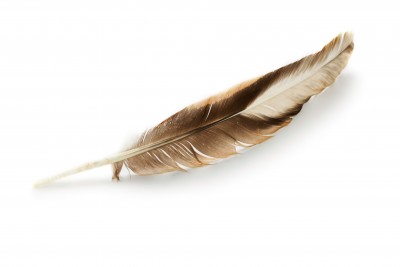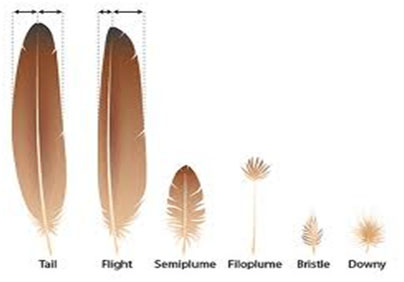- Home
- FAQs
- Customer Video Gallery
- Customer Photo Gallery
- Bird Facts
- Bird Food Blog
- Bird Information
- Feeding Advice
- Small Animal Information
- A to Z of Guinea Pigs
- A to Z of Hamsters
- A to Z of Rabbits
- Basic Care for Guinea Pigs
- Basic Care for Hamsters
- Basic Care for Rabbits
- Basic care for Chinchillas
- Basic care for Ferrets
- Basic care for Gerbils
- Basic care for Mice
- Basic care for Rats
- Buying a Healthy Small Animal
- Does your Reptile need a Licence
- Equipment for Ferrets
- Equipment for Hamsters
- Equipment for Mice
- Equipment for your Chinchilla
- Equipment for your Gerbil
- Equipment for your Guinea Pig
- Equipment for your Rabbit
- Keeping a House Rabbit
- Dog Information
- Cat Information
- Customer Information
- Fat Balls
- Suet Pellets
- Straights
- Seed Mixes
- Suet Treats
- Mealworms
- Bird Feeders
- My Account
Bird Feathers
The most unique feature of all birds is its feathers, none are without them and no other animal shares them.
In wet weather feathers act in much the same way as a raincoat, keeping the skin of the bird dry and preventing heat loss as a result. A great many birds have a gland, commonly known as the preen gland, which secretes an oil when squeezed by the bill. This oil is then applied to the feathers to provide a waterproof coating and is thought to also inhibit bacterial and fungal growth.

A fully grown feather is no longer a living part of a bird, it is, in some respects, similar to human hair or nails, only receiving physical support from its anchor point but no longer receiving nourishment or blood.
The typical feather that springs to most peoples mind would be the type known as a contour feather, although in actuality there are 6 distinct types of feather. The contour feather consists of a central shaft and a vane, in two halves or webs, with the bare end of the shaft referred to as the quill or calamus. The narrow pointed end of the calamus has a small hollow opening called the inferior umbilicus where the growing feather received its nourishment from.
The part of the shaft that is not bare, between the two webs of the vane, is referred to as the rachis. The thin shafts that extend from the rachis towards the edge and point of the feather are called barbs or rami of which there can be several hundred. These barbs have even smaller branches called barbules or radii which themselves have numerous hooklets called barbicels or hamuli. This bewildering and complicated arrangement can be seen more clearly in the image above.
In everyday use a bird may apparently damage one or more feathers when the barbs become parted from each other. However in most cases all the bird need do is draw the feather between its bill, the act of preening, and as if by magic the feather ‘zips’ itself back together. This can be simulated by taking a moulted feather and separating the barbs manually, then run the vane through your fingers gently once or twice and the same effect will occur.
The Function of Feathers
Feathers serve several different functions other than the most obvious one of flight. They serve as protection from both heat and cold. In cold weather the feathers are fluffed up to trap a layer of insulating air between the body and the feathers which acts in the same way as animals fur or a modern ski jacket. In warm or hot weather these insulating pockets of trapped air are removed by flattening the feathers against the body.In wet weather feathers act in much the same way as a raincoat, keeping the skin of the bird dry and preventing heat loss as a result. A great many birds have a gland, commonly known as the preen gland, which secretes an oil when squeezed by the bill. This oil is then applied to the feathers to provide a waterproof coating and is thought to also inhibit bacterial and fungal growth.

Feather Structure
A fully grown feather is no longer a living part of a bird, it is, in some respects, similar to human hair or nails, only receiving physical support from its anchor point but no longer receiving nourishment or blood.
The typical feather that springs to most peoples mind would be the type known as a contour feather, although in actuality there are 6 distinct types of feather. The contour feather consists of a central shaft and a vane, in two halves or webs, with the bare end of the shaft referred to as the quill or calamus. The narrow pointed end of the calamus has a small hollow opening called the inferior umbilicus where the growing feather received its nourishment from.
The part of the shaft that is not bare, between the two webs of the vane, is referred to as the rachis. The thin shafts that extend from the rachis towards the edge and point of the feather are called barbs or rami of which there can be several hundred. These barbs have even smaller branches called barbules or radii which themselves have numerous hooklets called barbicels or hamuli. This bewildering and complicated arrangement can be seen more clearly in the image above.
In everyday use a bird may apparently damage one or more feathers when the barbs become parted from each other. However in most cases all the bird need do is draw the feather between its bill, the act of preening, and as if by magic the feather ‘zips’ itself back together. This can be simulated by taking a moulted feather and separating the barbs manually, then run the vane through your fingers gently once or twice and the same effect will occur.

There are six commonly specified types of feathers:
- Vaned or Contour:
These form the outer coverings of a bird's body. Humans have used wing feathers, primary feathers as writing implements so in some ways birds are partly responsible for the works of Shakespeare! - Down:
This is a layer of loosely structured feathers lying beneath the contour feathers which can be used to regulate the heat of a bird, fluffed up they trap a layer of air and insulate the bird from the cold, flattened they expel this insulating air and help to cool the bird. Down feathers have been used for centuries to keep us humans warm but birds have been using it for a lot longer than that! - Semiplume:
These are similar to down feathers but have more pronounced shafts and a little more structure but serve a similar function to down also helping aquatic birds with buoyancy. - Filoplume:
These feathers occur between contour feathers and down feathers and are small hair-like feathers with a few barbs at the tip of the shaft. Although their function is not fully understood some experts believe that they act like feelers serving to help the bird optimise the position of its contour feathers in flight. In this way they would be analogous to sensors indicating the position of flight feathers. For this to be true however they would need to be present in all birds that fly and this is apparently not the case. Others believe they are just a kind of failed contour feather. - Bristle:
These appear as small vaneless contour feathers with only a few barbs at the base on a small, stiff rachis. They tend to occur around the eyes, nostrils, and around the mouths of flying insect-catching birds, and are referred to as rictal bristles. - Powder Down:
A type of down feather that grows continuously and is never moulted. The barbs at the tips of these feathers constantly disintegrate into a fine, talc-like, water-resistant powder.




